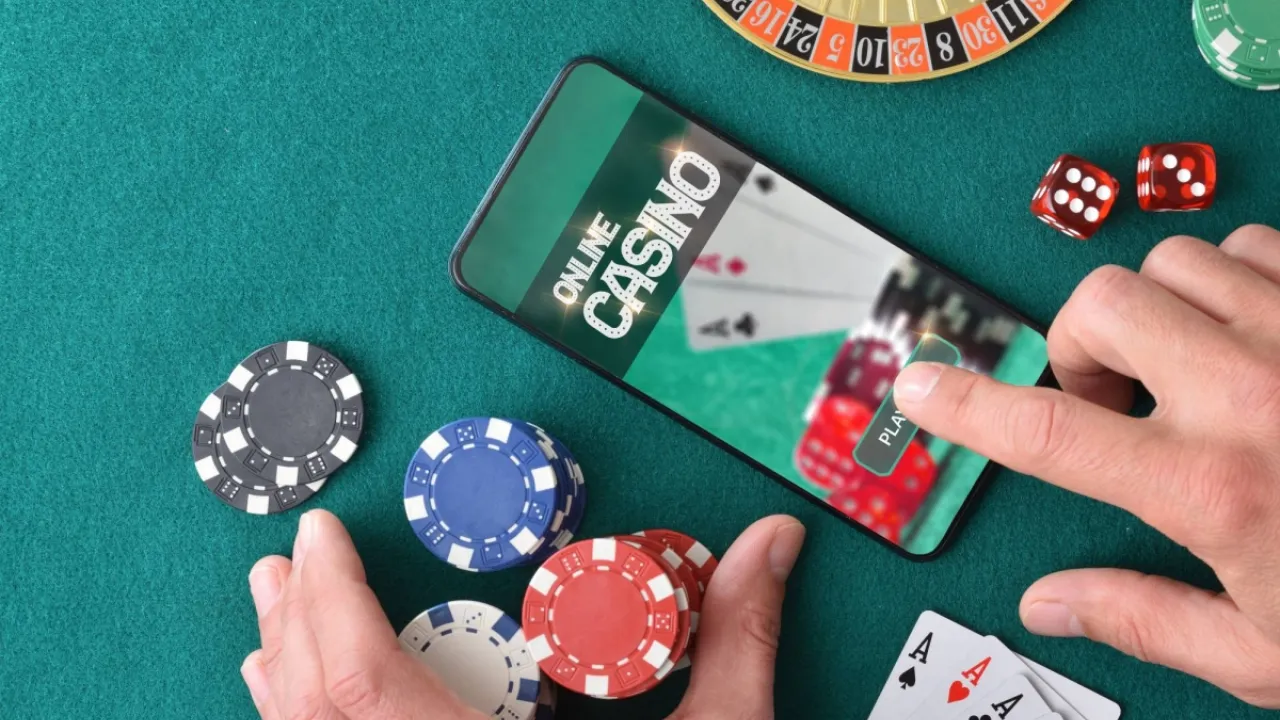Return to Player—RTP for short—is one of those acronyms casinos love to flash in the footer of a game screen, confident most people will glance, nod, and spin anyway. I’ve been that player, happily mashing “spin” without really grasping what that percentage meant for my bankroll. Years later, after testing dozens of titles, tracking variance, and even spreadsheeting my sessions (yes, I’m that person now), I can tell you RTP is both simpler and trickier than casinos make it sound. It can guide smarter choices, but only if you understand what it does—and doesn’t—promise.
RTP, Explained Without the Jargon
RTP is the theoretical percentage of all wagered money a slot will pay back to players over a massive sample size. Think millions of spins, not your next ten. A 96% RTP doesn’t mean you put in £100 and automatically get £96 back. It means that across an astronomical number of spins, the machine is designed to return £96 for every £100 bet. Some players will get steamrolled, some will spike wins, and the average—over time—settles near that figure. Consider it a compass, not a GPS.
Understanding this matters because not all slots are built equal. A 92% RTP game siphons more of your stake to the house than a 97% one. Over a long run, that gap is enormous. RTP is your first filter when choosing what to play, especially if you’re someone who enjoys longer sessions rather than quick high-volatility thrill rides. But RTP isn’t the only filter—and that’s where volatility, hit frequency, bonus structure, and even the casino you’re playing on come into play.
Where RTP Meets Reality: Regulation, Access, and Risk
Here’s where the real-world context sneaks in. On regulated UK sites, many games offer standardized RTP settings, and the operators are compelled to disclose them accurately. Step outside that bubble, into non GamStop casinos, and you’ll often find multiple RTP versions of the same slot, chosen at the operator’s discretion. Some offshore sites pick the lower-RTP build because, frankly, it fattens margins. Others keep the higher ones to lure savvy players. Without robust oversight, you’re responsible for checking game info screens and independent reviews, and for policing your bankroll and mental limits. It’s not doom and gloom—plenty of offshore operators are fair—but the due diligence flips onto you.
RTP also interacts with regulation in subtler ways. Some jurisdictions force transparent display of RTP and game audits; others don’t. If you’re serious about long-term play, look beyond the splashy homepage bonus. Find the game’s info panel, the paytable, even the developer’s official sheet if needed. A quick Google of “GameName RTP” plus the provider usually turns up the official spec. If what the casino lists doesn’t match, that’s a red flag.
The Anatomy of RTP: More Than One Number
Slots can ship with multiple RTP “profiles.” A developer might offer 88%, 92%, and 96% versions to suit different markets. The underlying math model can stay identical—reels, features, volatility—while only the return percentage changes. That’s why picking the right venue matters. Two casinos can advertise the same game; one gives you a fairer cut.
Another wrinkle: progressive jackpots often skim a portion of your bet into the pot, effectively lowering your base game RTP. You only feel that value if you win or if the jackpot grows so large that the expected value (EV) of a spin surpasses the theoretical loss. For most casual sessions, you’re subsidizing a prize you probably won’t see. That doesn’t make progressives “bad,” but it reframes RTP in those games. If you’re chasing longevity from your balance, a flat-top high-RTP slot is usually friendlier.
Volatility, Hit Rate, and Why RTP Alone Won’t Save You
Two slots can both claim 96% RTP and feel wildly different. One might deliver frequent small hits, keeping you afloat while you slowly bleed. Another might be a desert of dead spins punctuated by occasional gushers. That’s volatility in action. The former is ideal if you like steady engagement; the latter is a thrill ride but punishes short bankrolls. When researching a slot, peek at volatility ratings and hit frequency numbers when available. Streamers are another imperfect but useful gauge—watch a few sessions to see how the game behaves. Just remember that streamers often play with bonused money or sponsor deals, so their “risk tolerance” isn’t yours.
How RTP Can Actually Work for You
Let’s say you carve out a weekly bankroll and want it to last. Picking slots with RTP of 96% and up is your baseline. Next, look for games that match your temperament. If you’re a features junkie who lives for bonus rounds, find titles known for accessible triggers, even if the bonuses aren’t gargantuan. If your heart lives for one big moment, accept the dry spells and bet smaller to stretch your session.
I like to mix game types. I’ll start with a high-RTP, medium-volatility slot to warm up and maintain balance, then drop into a high-volatility title for a defined number of spins to chase a feature or big hit, then retreat back to something steadier. RTP is the foundation; volatility is the furniture. You need both to “live” in a game comfortably.
RTP and Bonus Hunting: A Love-Hate Relationship
Bonuses often come with wagering requirements, and not all games contribute equally. Sometimes, the highest-RTP slots are excluded or contribute at a reduced rate. Casinos do this precisely because savvy players flock to those games to grind wagering efficiently. If you’re clearing a bonus, balance the contribution rules with the RTP. A 98% slot that counts 10% toward wagering might be less effective than a 96% slot at 100% contribution. The math matters, especially if you’re the type to chase value in promos.
Also remember that some operators quietly adjust RTP during promotional periods. Always re-check the info panel; don’t assume yesterday’s number holds today. If the casino is silent on RTP, email support. If they won’t answer plainly, that’s a tell.
Land-Based vs. Online: Same Term, Different World
In brick-and-mortar casinos, RTP is often lower, and machines can be set anywhere in a wide band. Regulators usually allow a range (say 85%–92%), and floor managers pick settings based on location and traffic. That’s why those “casino myths” like “loose machines are near the entrance” persist—sometimes, they’re not myths. Online, it’s more standardized because you’re interacting directly with the developer’s math model. Still, as mentioned, multiple versions exist, and operators choose.
If you’re a land-based regular, remember that online play with transparent RTP listings can give you more control—assuming you pick reputable sites. It also exposes you to more info: forums, trackers, and audit reports that don’t exist for a slot cabinet in a smoky corner.
The Emotional Bankroll: Where RTP Doesn’t Reach
RTP is cold math; it doesn’t measure your emotional tilt. A 97% slot can still wreck your mood if variance bites hard. Once your emotional bankroll is drained, you start making bad decisions—upping stakes out of frustration, chasing losses because “it owes me.” No percentage saves you when your mindset goes sideways. Set hard stops. Decide before the session how many dead spins you’ll tolerate or how low you’ll let your balance dip. RTP guides expectations; discipline protects your wallet.
Real Examples: How I Use RTP Day-to-Day
On a fresh deposit, I’ll scan the lobby for my “steady eddies”—slots I know run at 96%+ with medium variance. NetEnt’s classic high-90s titles, Play’n GO’s better-known 96% versions, or Thunderkick’s quirky but fairly balanced games are usual suspects. If I’m in the mood to swing, I’ll hop to a high-volatility Pragmatic or NoLimit City slot for a set session time—twenty minutes or a fixed chunk of balance. If I hit a feature, great; if not, I walk.
When I’m experimenting on less-regulated sites, I verify RTP in the paytable and sometimes cross-check with the developer’s site. If I see “multiple RTP profiles available” in a press release, I assume the worst until proven otherwise. I also test withdrawals early. No point winning on a sweet 97% slot if you can’t cash out smoothly.
So Which Slots “Use RTP to Your Advantage”?
The phrase is a bit of a misnomer. RTP isn’t a weapon the slot uses for you; it’s a transparency metric you use against the house. Titles with consistently published 96–97% RTP, fair volatility, and honest bonus structures are your allies. Legacy games like Blood Suckers (famously high RTP), classics like Starburst or Book of Dead (if the operator hasn’t crippled them), or newer releases explicitly marketed with 96%+ returns are typically friendly. Just check the version. A quick “GameName RTP 96” search usually reveals if lower variants exist.
If you’re bonus grinding, find games that both contribute fully to wagering and keep variance manageable. If you’re thrill-hunting, better to know the true return than go blind. The real advantage is knowledge: of RTP ranges, volatility, and how your casino configures its games.
Final Thoughts: RTP as Your North Star, Not Your Lifeline
RTP won’t guarantee wins, but it will anchor your expectations. Use it to choose smarter, stretch your bankroll, and avoid stealthily gouged versions of your favorite slots. Combine it with honest self-assessment: how much volatility can you stomach, how disciplined are you with exits, and how comfortable are you playing outside rigid regulatory frameworks? When you answer those questions, RTP becomes part of a broader, smarter gambling toolkit—not a magic number to worship or ignore.





